Green Industry Websites: 6 Pages You Haven't Thought Of

Creating a website for the green industry might seem straightforward at first glance. It's easy to put together a basic site that checks off all the essential boxes. However, this approach often leads to a common problem…
The website lacks a certain depth or functionality. It doesn’t truly engage and convert visitors into leads. You don’t get many job applicants through it either.
The goal isn't just to have any ol’ website but to have one that serves as a dynamic tool for business growth, effectively showcasing your services and engaging your target audience.

Image Source: Lawn Buddies
This involves a thoughtful process, starting with a solid outline or sitemap, that places your customer's journey at the forefront, ensuring every page and piece of content is aligned with their needs and your business objectives.
Think of it as you would chapters in a book. At the center of this story is your customer (yes, not you). You are a supporting character guiding the customer to success.
But to do this, your green industry website needs the right content at the right places.
Most green industry pros don’t go far enough in telling this story, limiting the number of pages to the basic essentials:
- Homepage
- About
- Services pages
- Portfolio or Gallery
- Contact or Consultation or Quote
While these are important (and most obvious) pages for a website there are 6 others that you should consider.
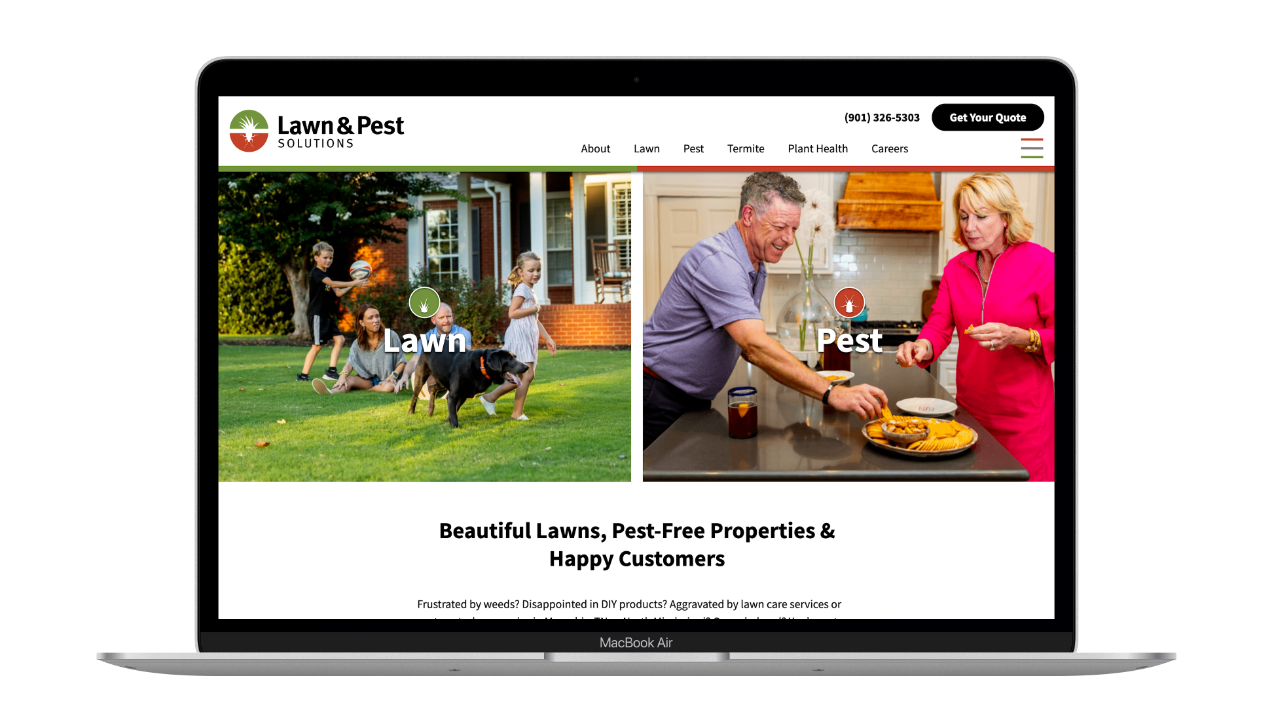
Image Source: Lawn & Pest Solutions
Over the years, we’ve viewed and analyzed hundreds of green industry websites. And we’ve been involved in the website design and development for many clients. Here are the 6 pages you should consider adding to your green industry website.
Let’s dive into each of these and explore some crucial details.
1) Customer Center: The Green Industry Website Insider Experience
The bulk of the content on green industry websites should appeal to prospective customers. After all, the primary goal of a website is to get more quality leads.
.jpg?width=694&height=463&name=lawn%20care%20customer%20-%20rainmaster%20(1).jpg)
Image Source: RainMaster Lawn Systems
But your website should also be a resource for your customers as well. The problem? Sometimes it can be hard for them to find customer-centric resources. The solution is creating a Customer Center on your green industry website.
One of Oasis Turf & Tree’s most visited pages is their Customer Center. It helps that they have over 18k customers and send regular emails linking to this page.
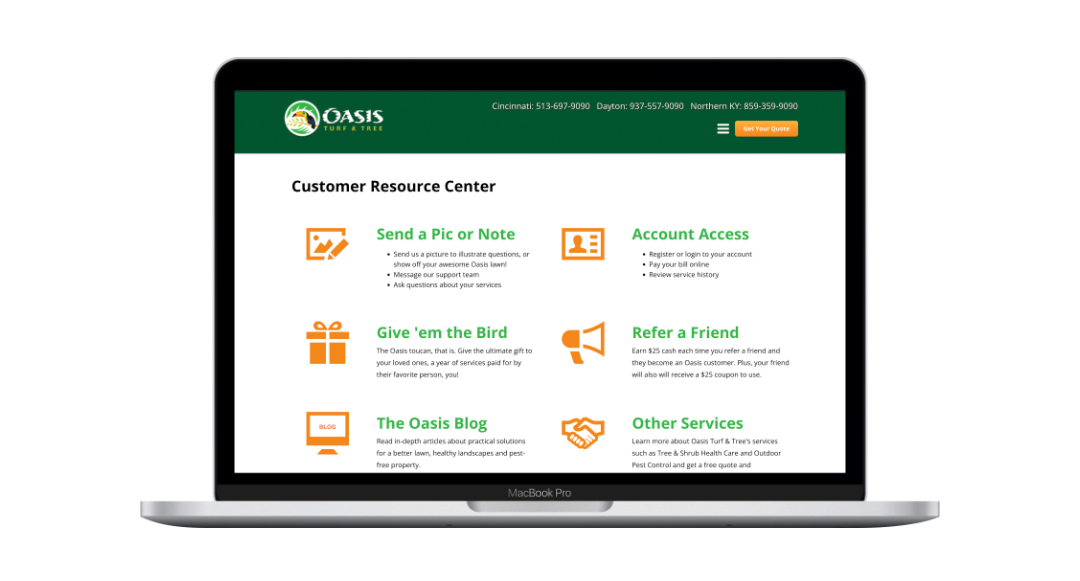
Your green industry website’s Customer Center could include helpful links to certain pages. A few of these suggestions will be covered in more detail below.
- Send a Picture or Note: Make it easy for them to upload images and ask questions.
- Account Access: Give the direct link to your green industry software’s customer portal.
- Gift Cards: Provide an easy way for them to purchase a gift for a friend.
- Referral Program: Create an easy form for them to submit a referral.
- Blog: Explore in-depth topics about improving their properties.
- Services Links: Raise awareness of other services you provide.
- Upcoming Events: Provide a calendar for education and community involvement.
- Special Promotions or Contests: Offer special perks just for customers.
- Team Bios: Let them get to know the people who help them regularly.
2) Career Center: Beef Up Your Landscaping Recruiting
There are your primary prospective customers and then there’s another just as important…potential team members!

Image Source: Landcrafters
It’s common for green industry websites to have a page where they post job openings and general information about benefits. But job seekers want more! If you’re going to compete with the hundreds of other employer options out there, your potential team members deserve deeper content.
A Career Center is a hub that serves as a jumping-off point to deeper content. Some additional features to add include:
- Interactive Career Path: Give job seekers the ability to “choose their own adventure” as they click through various divisions, roles, etc.
- Career Opportunities Video: Create a video showing the various types of roles that exist in your green industry company.
- Job Position Pages: You can create quick links to various positions. When you click these “cards” it takes the visitor to an entire page about that position. (Bonus points if you put pay ranges on these pages!)
- Compensation & Benefits Info: List them out and explain more if needed.
- Process Module: Outline a simple 3-4 step process to go from a frustrated job seeker to having a career they love.
- Team Quotes: Display quotes from your team members about what it’s like to work there. Include their name and role.
- Company Culture Assets: If you have plenty, put all of these on a separate page. At a minimum, include a culture video on your Career Center next to some concise points.
- Education & Training: Detail what courses you provide to improve your team’s skills and any certification or leadership programs you run on a regular basis.
- Pro Images: Invest in professional photography of happy team members!
- Career-Related Articles: You can create a separate blog all about recruiting topics! Anything from career advice, team member profiles, and industry trends may be of interest.
- Open Positions: Embed a link to your third-party job posting tool or update these opportunities regularly.
Below is a video tour of the Turfscape, Monarch Landscape Management, and Oasis Turf & Tree Career Centers.
3) Team Page: Meet the Green Industry Pros
While an “About Us” page may explore your company’s overall story and values, a Team Page can give more information on the green industry pros who make the magic happen.
Remember this…people hire people. There are plenty of impersonal brands out there. Show your smiling faces and let people know who they’ll be working with!
I firmly believe that it’s money well spent to invest in a professional photographer. Capture unique portraits of key leadership, admin, design, and sales team members at a minimum.
On our first photograpny and video production project with James Martin Associates, we were sure to carve out some time to grab some photos in their showroom.
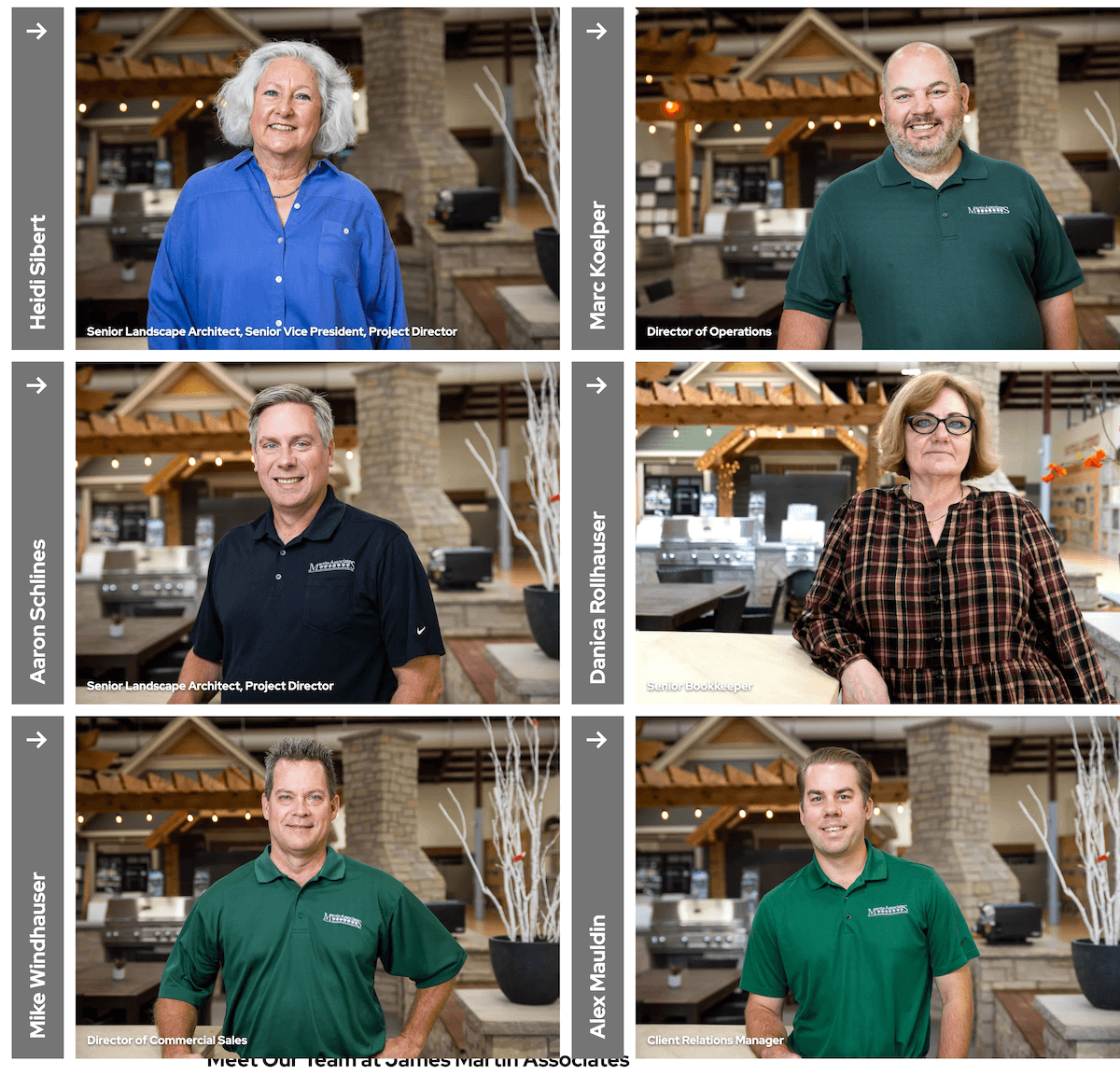
Beyond the headshots, creating a concise bio for team members is a great way for prospects and customers to get to know your team. We sent the Kingstowne Lawn & Landscape team members 5-6 questions and requested concise information. Then we wrote brief bios for their Team Page. When visitors click on team members, they can learn more about them.
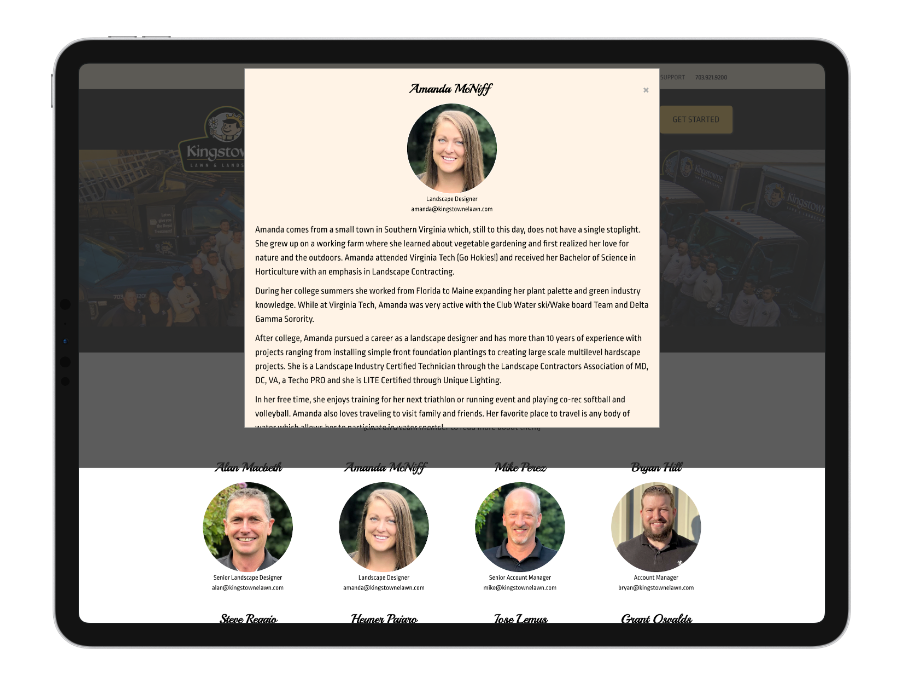
We’ve even created in-depth bio articles about team members for our clients. Below, you can see an example from Level Green Landscaping, featuring one of their account managers (both in pictures and video). If it exists, you could link out to deeper content on your team members’ bios.

4) FAQs on Your Green Industry Website
Make your customer journey easy. One great user experience feature is adding a FAQ page to your website.
- Sit down with your team and brainstorm 50-75 of the most frequently asked questions from your clients.
- Organize these questions by category (general, billing, service-related, etc.)
- Write concise 2-3 sentence answers for each question. (Bonus, if you have an article that dives deeper, link to that article.)
FAQs are an important page for a website. Put a prominent link in various places such as the main menu, footer, service pages, etc. Here’s an example of a simple and organized FAQ page on the Seacoast Turf Care website. Clicking a question expands the answer.
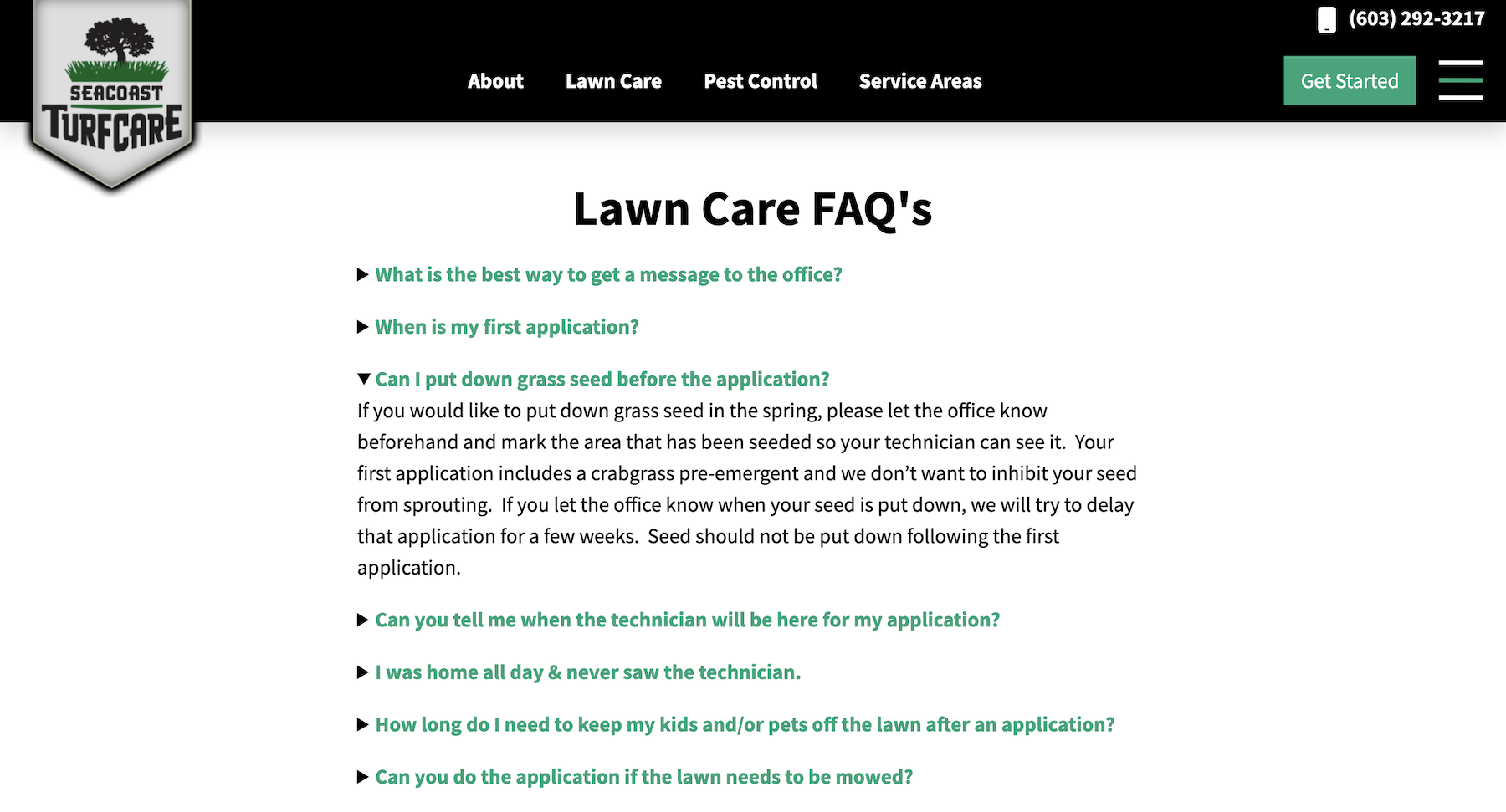
5) Video Gallery
It’s no surprise that people love landscaping marketing and recruiting videos. Whether they are a job seeker, prospective clients, or an active customer, many people prefer the richer experience of watching videos.
As you can see below, people love the videos on Grassperson Lawn & Landscape’s Video Gallery.
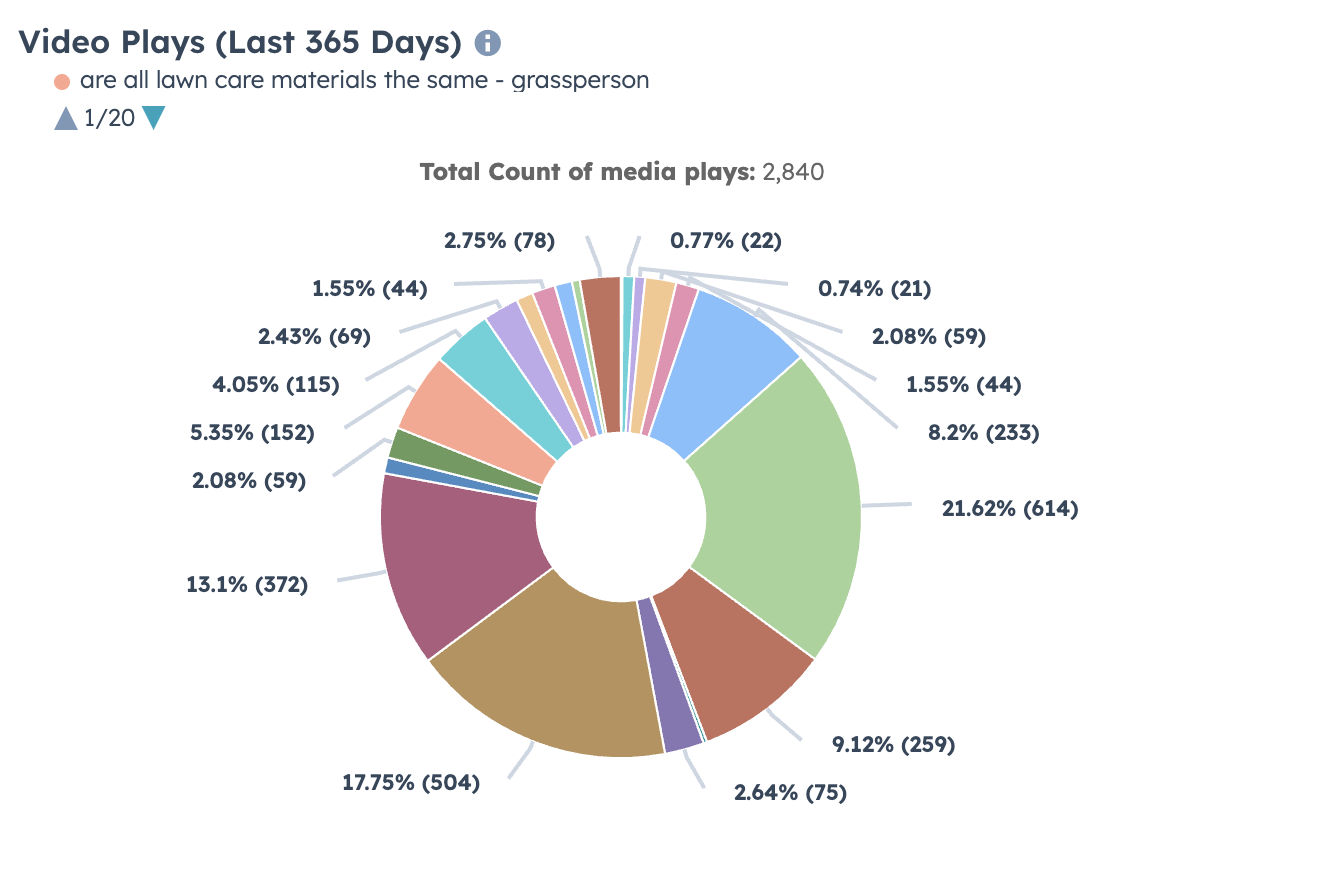
After your company produces 6-8 videos, it’s helpful to be able to sort the videos by category so your green industry website visitors find the content that most interests them. FYI, another bonus of a website packed full of quality, professional videos is that visitors will spend more time on pages (a great SEO signal to Google).
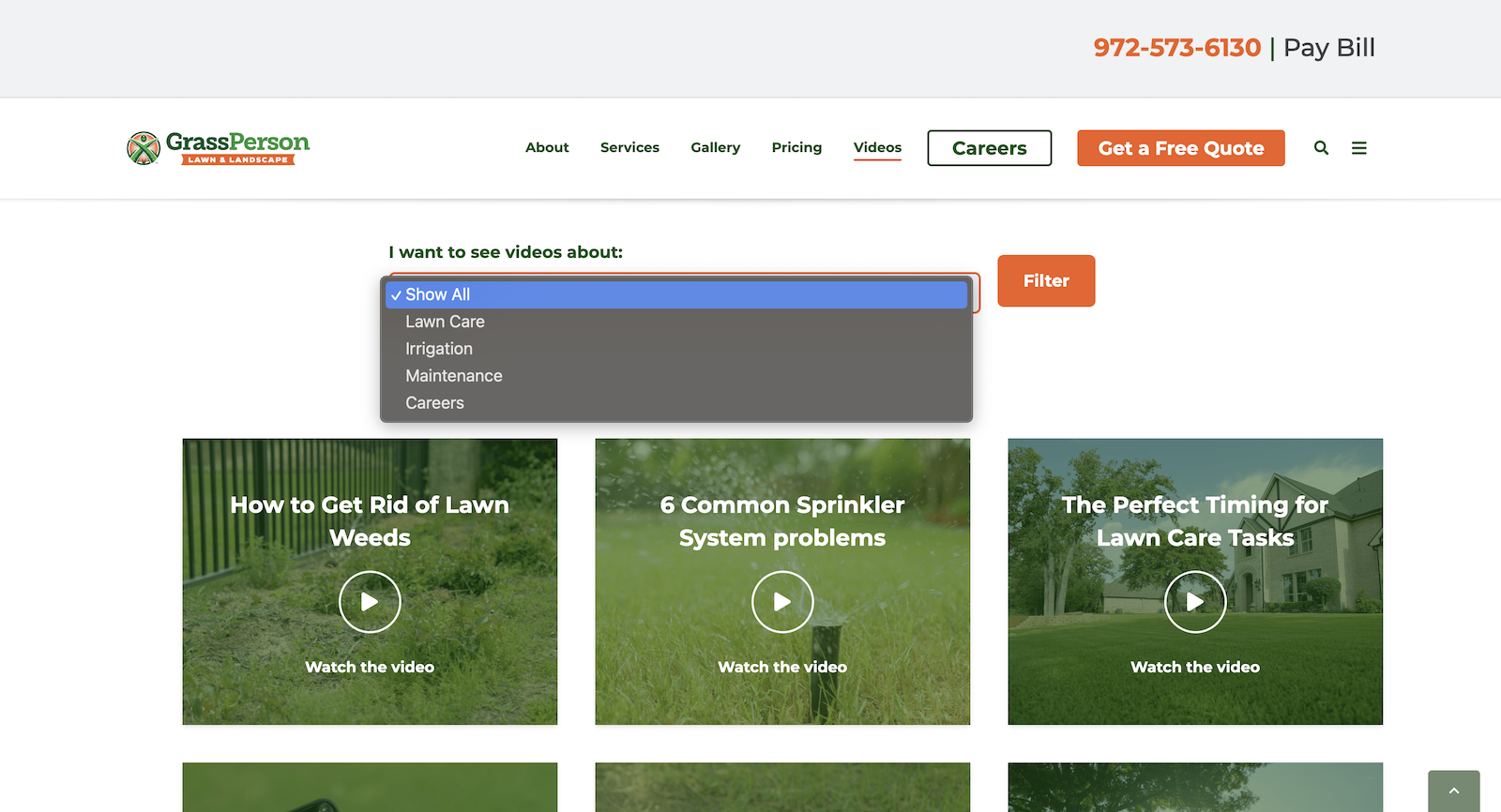
6) Service Area: Deter Out-of-Area Leads
Websites for green industry companies need to repeatedly reinforce where they perform their services.
While it’s always a good landscaping SEO idea to include text references to areas you serve, make it more clear on a Service Area page. These visualizations can help prospective clients see where you perform work, even breaking it down by service division.
As you can see in the example below, Tropical Gardens Landscape has a smaller service area for design-build projects than for some other maintenance services.
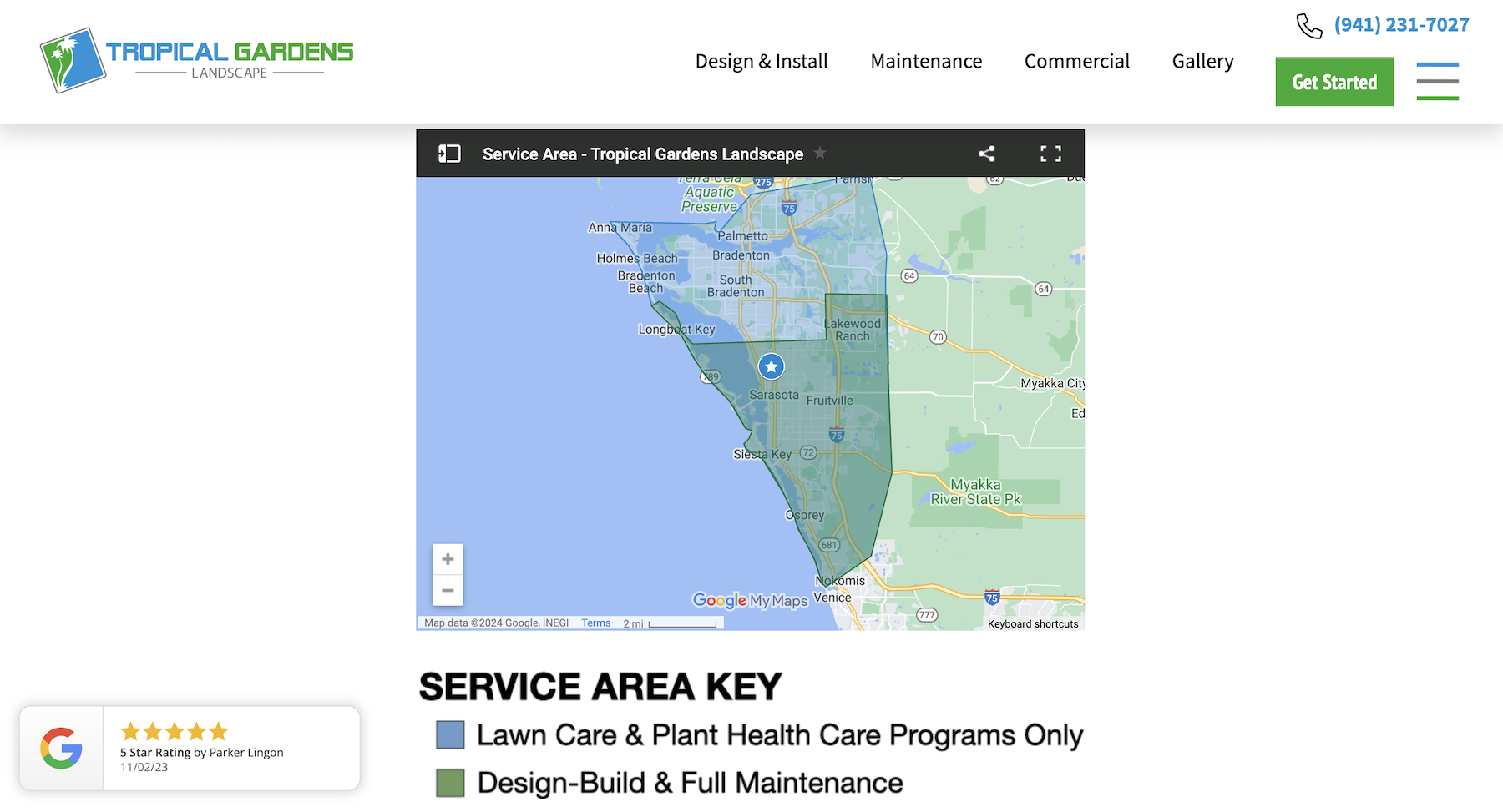
There are a variety of places on your green industry website where you can have links to your service areas. You could just add the map at these locations and a button to click to see this Service Area page in more detail or dive into more specific areas you serve on subsequent pages.
Give Them What They Want
Your green industry website needs to be more than just functional; it should be a strategic asset that actively contributes to the healthy growth of your business.
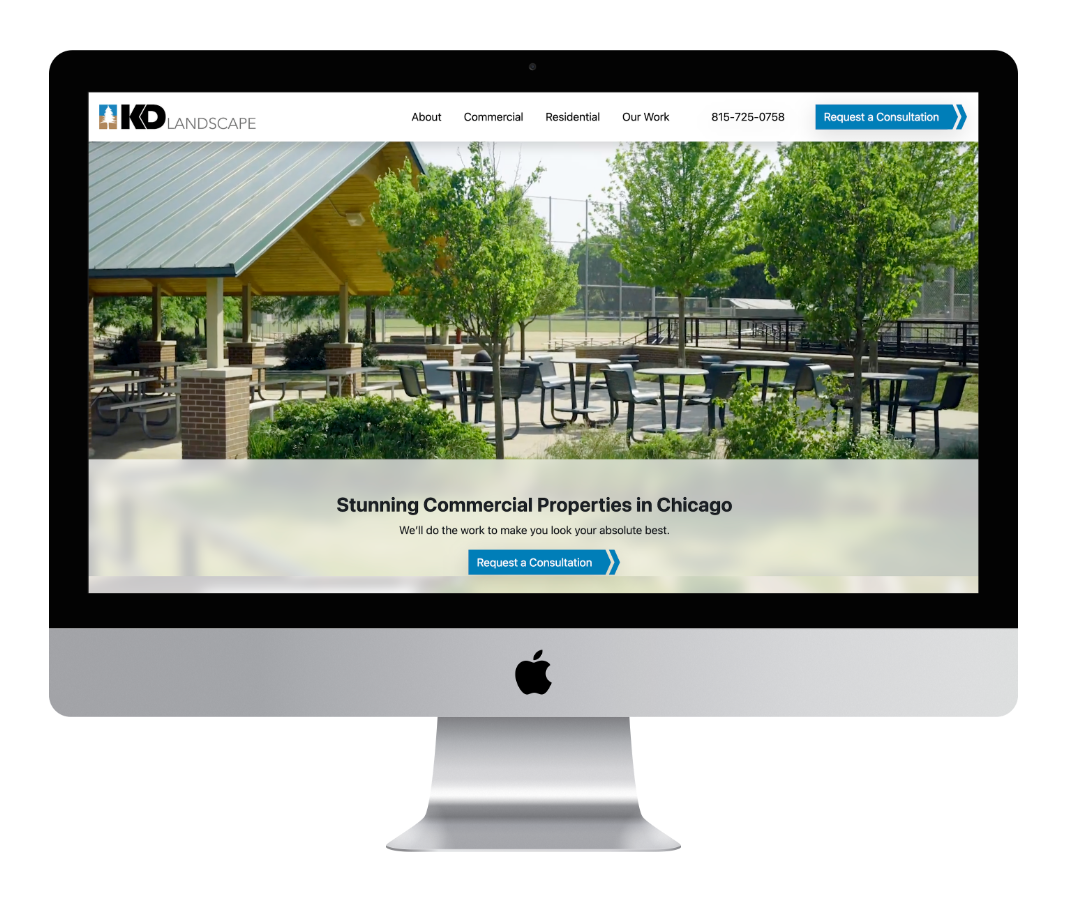
Image Source: KD Landscape
Beyond the essential pages, incorporating pages like these can significantly enhance the user experience and effectiveness of your site. Spend the time and resources to invest in a quality website. In the end, it will establish you as a leader in your market. You’ll be the brand people want to do business with and reveal a workplace that team members are excited to join.
If you like deep insights and examples of the best green industry websites, join 5,000+ other green industry pros who subscribe and get articles delivered right to your inbox. And, if you’re ready to add all the pages, functionality, and beautiful bells and whistles to your green industry website, reach out to us to request a consultation.





